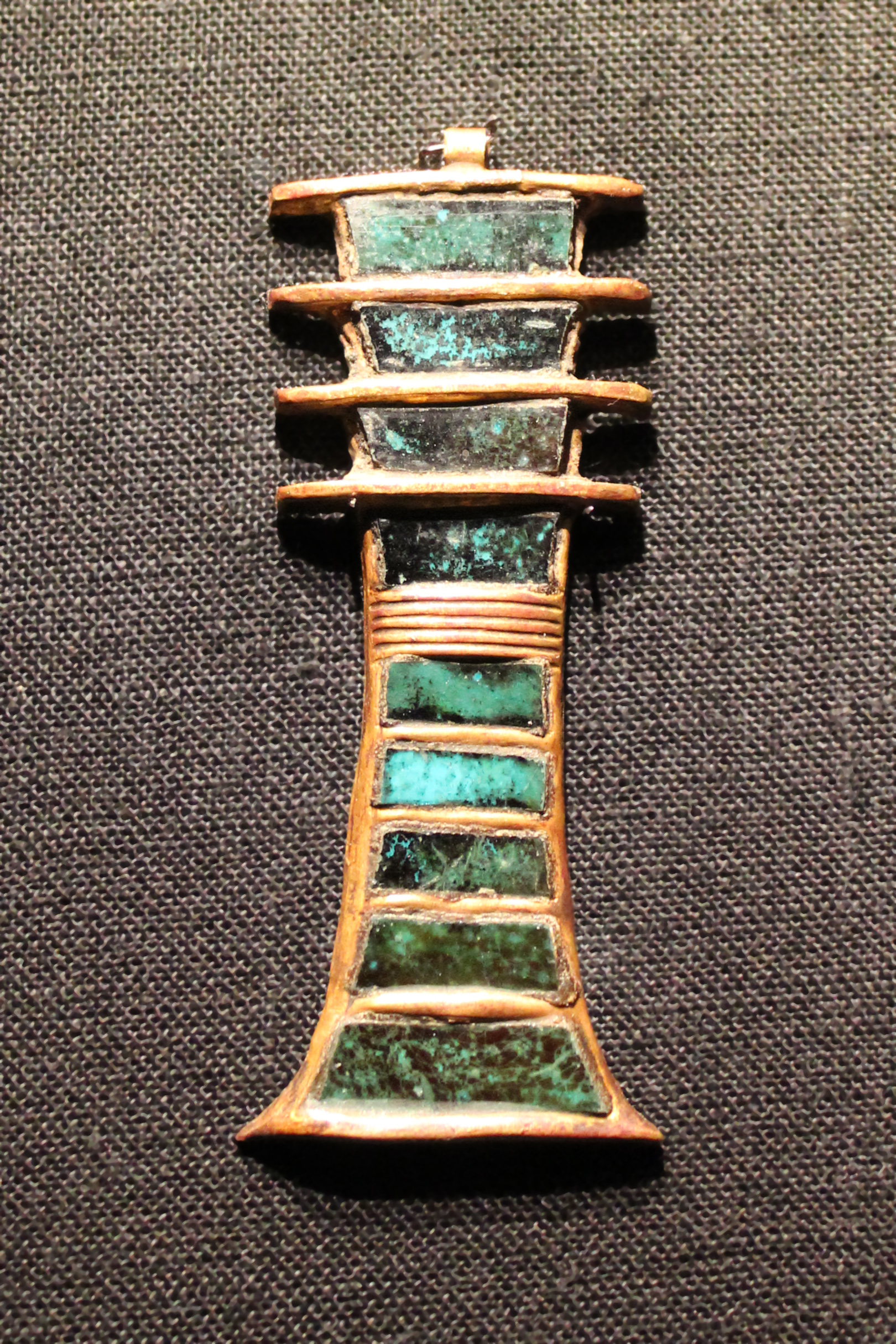
Gold Djed Pillar Amulet with Faience Inlay
Grand Egyptian Museum #130
 Gold Djed Pillar Amulet with Faience Inlay Grand Egyptian Museum #130 |
|
This may have been one of the two Djed pillars found at Tutankhamun's neck. One of them photographed in
James' book was solid gold, the other was not included in his book. (T.G.H. James, Tutankhamun, Metro books/White Star 2000) page 165)
From Richard A. Fazzini, _Art for Eternity: Masterworks from Ancient Egypt_,(Brooklyn Museum of Art, 1999) page 157:
 From _Reading Egyptian Art_, Wilkinson,
"The djed was associated from Old Kingdom times with the chief Memphite god of creation, Ptah, who was himself termed the 'Noble Djed'. Thus in the tomb of Nefertari at Deir el-Medina, Ptah is shown standing in a shrine-like kiosk with a large djed column behind him."- Richard H. Wilkinson, _Reading Egyptian Art: A Hieroglyphic Guide to Ancient Egyptian Paint and Sculpture_, (Thames and Hudson 1992) page 165
"In relief scenes, and in decorated objects, the djed was one of the most frequently used hieroglyphic signs, either alone or in conjunction with the ankh and was signs, or with the tiet - the so-called 'Isis knot'. The djed also had particular associations with Egyptian concepts of royalty. In the temple of Seti I at Abydos, personified djed signs are shown in the kind of heavy pleated clothing worn by royal figures (ill. 3), possibly as representative of the king himself." - Wilkinson, page 165
 |


